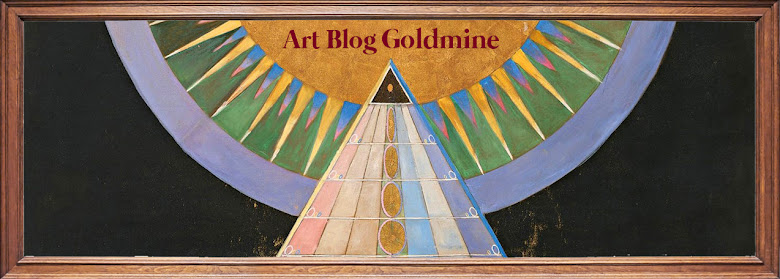I visited the exhibition to broaden my expertise in art history,
study Baroque Art in person, and analyze artworks. I’m truly
grateful that I had a chance to view works of Baroque Art in real
life, so I was obliged to write a review about this lifetime
opportunity. This review reflects my fervent passion for those
masterpieces and I hope readers also could find joy in admiring them.
I divided review into two parts according to collections in
exhibition.
Topics Covered in Part 1
- Background Information
- Renaissance paintings of Farnese Collection
Topics Covered in Part 2
- Baroque paintings of the Bourbon Collection
- Conclusion: Opinions and Lessons
Background Information
Baroque Art
A highly embellished style of art influenced by revived Renaissance and Classical ideals of beauty. It was an expansive art movement that happened throughout Europe from 16th to 18th century. It affected the artworks of Italy, France, Spain, Portugal, Austria, and Southern Germany. The particular traits were infused into various genres of visual art, including painting, sculpture, architecture, and even music. Visual traits of Neapolitan (Baroque Art) paintings include dramatic contrast, realistic depiction, literary references through biblical and mythological subjects, sensual richness, strong emotions, and a sumptuous color scheme.
The art movement occurred as a consequence of religious tension between Protestants in power and the Catholic Church seeking to re-establish authority. One of the agendas of the Catholic Church was to bring images of worship back to the public. Church believed that installing monumental religious paintings of dramatic visuals not only encourages piety towards God from believers but also inspires awe in Church. To implement their agenda, Church authorities commissioned artists to paint on large-scale frescoes of ceilings and vaults of Church and palaces.
Antea shows a striking image of a finely dressed, aristocratic lady gazing directly toward the audience. Mastery of technique is a remarkable trait of this painting. Renderings of porcelain skin, voluptuous foldings of luscious dresses adorned with embroidery, and sharp gleams on jewelry deserve keen observation. A Precious yet enigmatic subject naturally incites curiosity in viewers. Unfortunately, not much is documented about this painting. The intention remains unknown as the sponsor and how the painting was consumed are unknown. The concept is also unknown as the identity of the lady is unknown.
The art movement occurred as a consequence of religious tension between Protestants in power and the Catholic Church seeking to re-establish authority. One of the agendas of the Catholic Church was to bring images of worship back to the public. Church believed that installing monumental religious paintings of dramatic visuals not only encourages piety towards God from believers but also inspires awe in Church. To implement their agenda, Church authorities commissioned artists to paint on large-scale frescoes of ceilings and vaults of Church and palaces.
Notable Techniques
- Chiaroscuro: treatment of dark and light to create contrast. Devised by Caravaggio, a master of Baroque Art. His technique is indeed the backbone of immersive Neapolitan paintings. It had a lasting influence on artists of his generation and his descendants.
- Tenebrism: increase in contrast to emphasize a particular element
Capodimonte Museum
A shrine of Neapolitan paintings. It holds the highest amount and most important works. It is located in Naples, Italy, as a result of the history of the port city. From the 16th to 18th century, Naples was once a flourishing art market that attracted many artists searching for work. They received commissions from patrons and held workshops throughout the city.Renaissance Paintings of Farnese Collection
Farnese Collection was named after the real last name of Pope Paul III. As a Church authority with the ambition of ascension to the papacy, he collected and commissioned art as a strategy. He believed that his policy was an expression of knowledge, power, and status. He sponsored Michelangelo, Raphael, Titian, and more.
At the exhibition, two types of subjects were on display: Humanism and Beauty. I decided to discuss paintings of Beauty in depth as they have stronger images and much more interesting stories behind them. Both of the artworks below feature feminine beauty as a subject. Humanists perceived beauty as a manifestation of moral character. Depicting it as an expression of truth and virtue.
At the exhibition, two types of subjects were on display: Humanism and Beauty. I decided to discuss paintings of Beauty in depth as they have stronger images and much more interesting stories behind them. Both of the artworks below feature feminine beauty as a subject. Humanists perceived beauty as a manifestation of moral character. Depicting it as an expression of truth and virtue.
 |
Parmigianino, Antea, ca.1535, Oil on canvas, Farnese Collection |
 |
| Titian, Danae, 1544-1545, Oil on canvas, Farnese Collection |
The painting features the climax scene of Danae’s story in Greek myth. In the story, Danae’s father, king Acrisius of Argos locks up her in a bronze tower, as an oracle predicted that he will be murdered by his grandson. Nevertheless, Zeus transforms into a golden cloud and has affair with Danae. Through this occasion, Danae gives birth to Perseus, who murders Medusa.
Similar to Parmigianino who painted Antea, Titian demonstrates a robust capacity in depicting realism. The most notable technique in this painting is the adjustment of contrast. The difference in value(amount of light and dark in color) between the background and foreground enhances sublime lighting that bathes the central figure. However, Titian's technique is slightly different from that of Parmigianino. Instead of portraying attentive details, Titian renders Danae in a swirling cloud of loose brushwork, emphasizing the stark contrast between the subject and background.
HKMoA: Baroque Art Masterpieces from Capodimonte Museum, Part 2
Thank you for finish reading the article. To support Art Blog Goldmine:
- Browse and read articles of similar topics in Art Events: Classical
- Subscribe to the blog via RSS feed
- Follow Twitter for must-know art history facts and key art world news
- Recommend the blog to art enthusiast communities




No comments:
Post a Comment